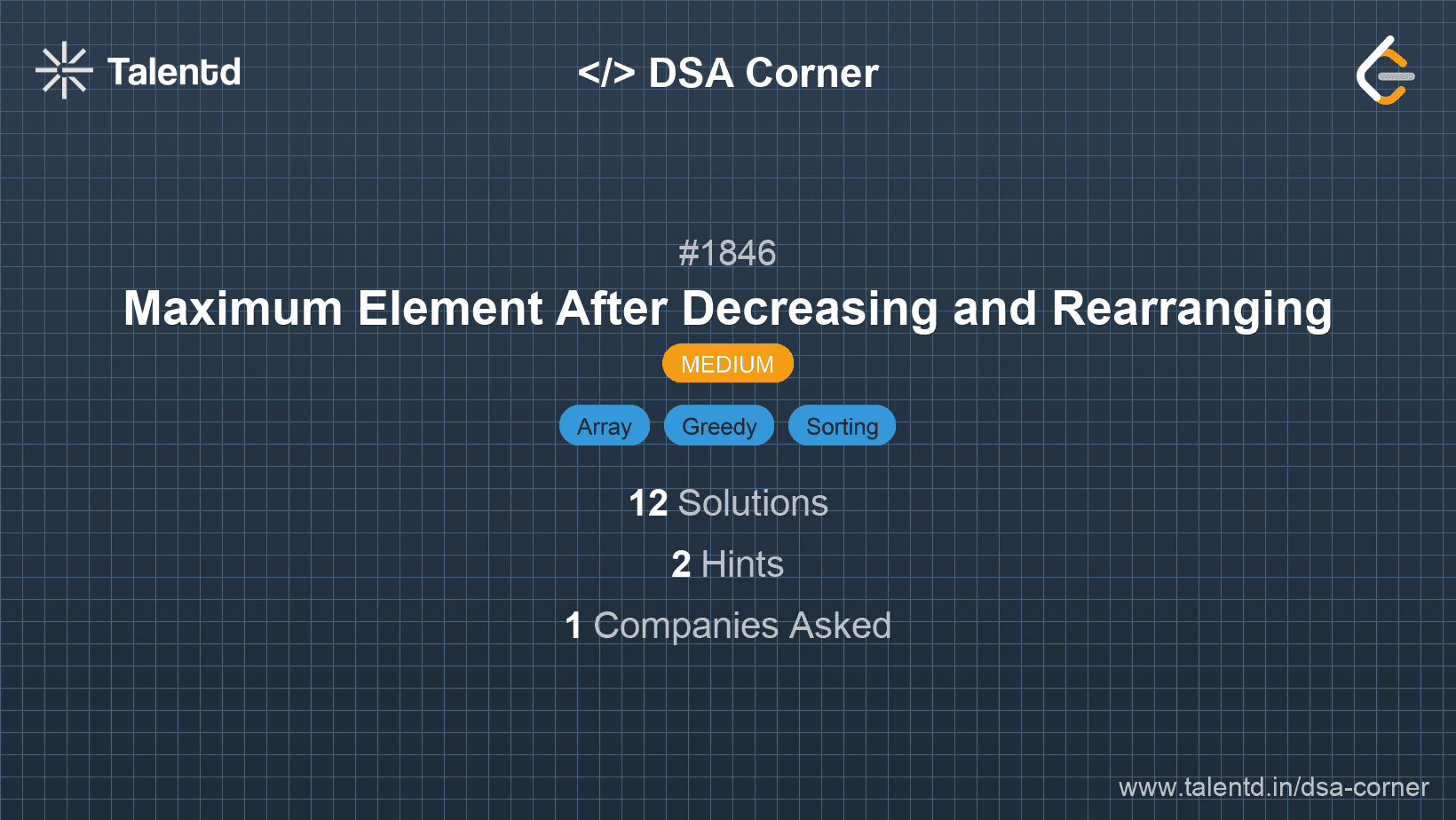
Sponsored
Sponsored
This approach involves sorting the array first. After sorting, we iterate over the array from the first element onwards, setting each element to be the minimum between its current value and the value of the previous element plus 1. This ensures the conditions are met, i.e., the first element is 1 and the difference between adjacent elements is <= 1.
Time Complexity: O(n log n) due to sorting.
Space Complexity: O(1) as we modify the array in place.
1function maxElementAfterDecreasingAndRearranging(arr) {
2 arr.sort((a, b) => a - b);
3 arr[0] = 1;
4 for (let i = 1; i < arr.length; i++) {
5 arr[i] = Math.min(arr[i], arr[i-1] + 1);
6 }
7 return arr[arr.length - 1];
8}
9
10console.log(maxElementAfterDecreasingAndRearranging([100, 1, 1000]));We employ JavaScript's array sorting method sort() with a comparator to ensure numerical order, then adjust each element to maintain the maximum possible value meeting the conditions described.
This approach leverages the counting sort technique which avoids sorting the entire array directly. Instead, it uses a frequency array to count occurrences of each element. Then, reconstruct the final array by checking counts and adjusting values accordingly to ensure the maximum element is achieved while meeting the constraints.
Time Complexity: O(n), due to the pass over the array to count elements.
Space Complexity: O(n), primarily due to the count array.
JavaScript applies a similar counting strategy using an array to help determine maximum values while adhering to the described conditions. This approach bypasses explicit sorting and utilizes counting for better efficiency.